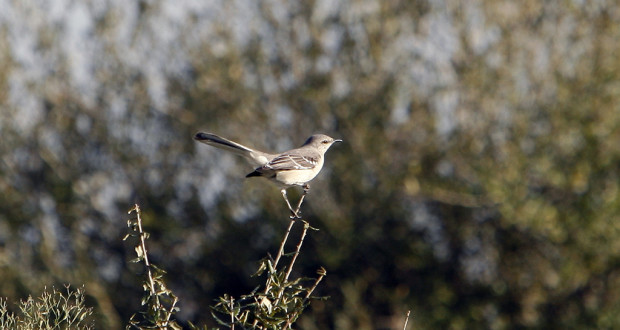• Length: 10 inches
• Wingspan: 14 inches
• Season: Year-round
More about Northern Mockingbirds.
Where they are, and when.
They are a long-tailed, short-billed pale gray bird common to open areas near dense vegetation, in both town and country. In flight, they flash large white patches on their wings and white feathers on the outside of their tails. At rest, their wings protrude past their body.
Northern Mockingbirds sing from perches on shrubs, trees, utility poles and fence posts. They continually add new songs throughout their lives, and have separate repertoires for spring and fall. Their songs have structure, and they will repeat phrases several times. They are among a few birds that will often sing at night.
They nest in dense shrubs or low trees. The nests are a conglomeration of twigs with a cup of grass, leaves and other soft material inside. They incubate three to five eggs and may raise several broods in a season, starting a new nest for each brood. During breeding season they’ll aggressively defend their territory against other birds and intruders.
Northern Mockingbirds hop and run across the ground as they forage, subsisting on insects and invertebrates in the summer, including including beetles, grasshoppers, spiders, snails, and worms. In the fall and winter, they switch to berries and fruit.
